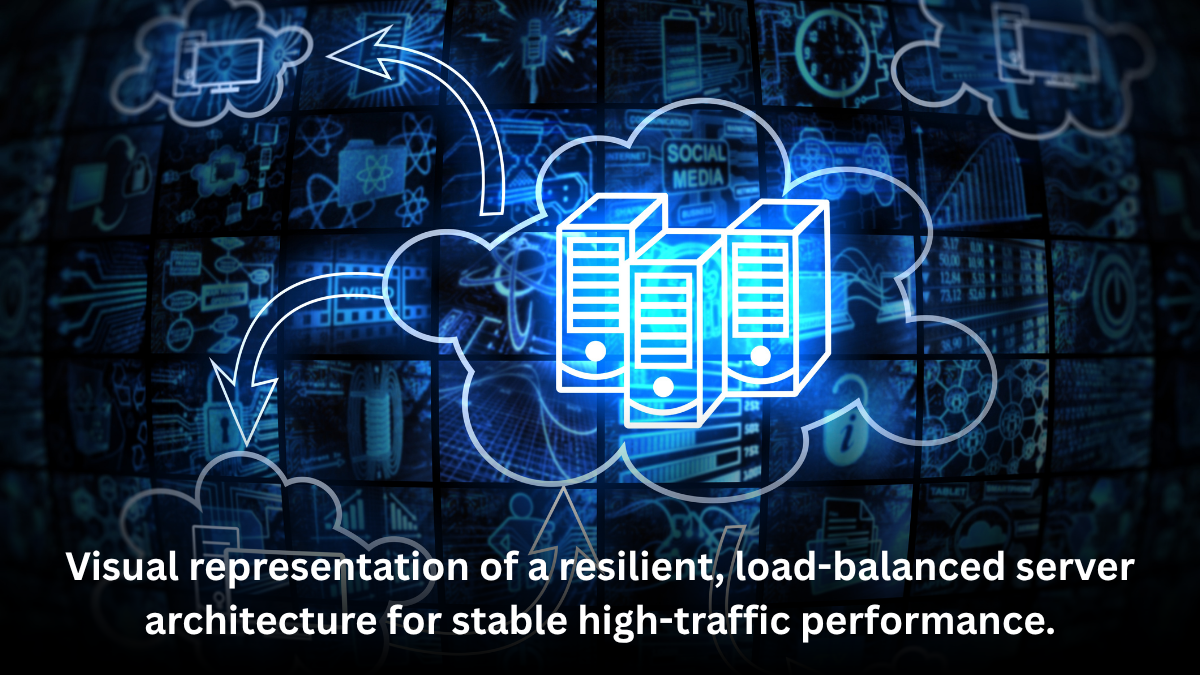

Website Design & Development for High Traffic
Design and develop your high-traffic site with scalable architecture (load balancing, auto-scaling) and performance optimization (CDN, caching).
A website is a business’s most important asset in the hyperconnected digital world of today. But what happens if your product goes viral or your marketing campaigns take off, and your website suddenly receives a ton of traffic? It’s worse to have a gorgeous website that breaks under stress than to have none at all. Designing and developing for high traffic is a must for companies with ambitious growth goals.
Our specialty at Contemporary Media Group is creating digital experiences that are not only aesthetically pleasing but also built for optimal performance and steadfast stability, regardless of the volume of users.
Scalable Architecture: The Basis for Websites with High Traffic
A robust and scalable underlying architecture is essential for a website designed for heavy traffic. This is the intersection of infrastructure planning and development strategy. We use cutting-edge solutions like cloud-based auto-scaling, which automatically modifies server resources to meet demand in real time, to go beyond simple hosting. This lowers expenses during slow periods and guarantees that your website never falters during busy hours.
Our top priority is a decoupled architecture, which separates the presentation layer from the content and frequently makes use of a headless CMS. This division significantly increases speed and resilience by enabling each component of your system to scale independently. In order to keep any one server from becoming a bottleneck, we also deliberately use load balancing, which divides incoming user requests among a fleet of servers.
Explore our specialized high-traffic web development services and see how we engineer success!
Code Optimization for Lightning-Quick Performance
For websites with a lot of traffic, speed is crucial. Significant decreases in conversions and an increase in bounce rates can result from even a one-second delay. Performance optimization is the primary focus of our design and development process.
We use sophisticated caching techniques, storing static assets (such as scripts and images) on servers located closer to your users via Content Delivery Networks (CDNs). This lowers latency and significantly lessens the strain on your primary servers. To ensure the smallest file sizes for quick downloads, we strictly minify and compress HTML, CSS, and JavaScript code on the development side. Additionally, we prioritize the above-the-fold experience by utilizing contemporary image formats like WebP and implementing lazy loading to guarantee that images only load when the user scrolls.
Did You Know?
Your bounce rate can rise by more than 30% if your page loads in three seconds instead of one!
UI/UX Designed for Smooth User Retention and Flow
A popular website needs to be simple to use and intuitive. Clarity, consistency, and conversion are the main goals of our User Interface (UI) and User Experience (UX) design. Since mobile devices account for the majority of high-volume traffic, we adopt a mobile-first design strategy. This guarantees a faultless experience on any screen size.
Clear Calls-to-Action (CTAs) that are positioned strategically to lead users through the sales funnel without confusion are essential to our high-traffic designs. To ensure that your most crucial content and conversion points are instantly apparent and actionable, we uphold a strong visual hierarchy by utilizing contrasting colors and lots of whitespace.
Are You Prepared for the Upcoming Major Upsurge?
Your website must be your company’s greatest ally if it is set for rapid expansion. Avoid letting an unexpected spike in traffic ruin your success.
Give Contemporary Media Group a call at 973.512.3122 for a consultation on future-proofing your online platform.
Commonly Asked Questions (FAQ)
What distinguishes a high-traffic website from a standard website build?
The infrastructure and architecture are where the main differences can be found. While a high-traffic build uses components like load balancers, CDNs, database clustering, and cloud auto-scaling to ensure stable performance under massive user load, a standard build concentrates on aesthetics and basic functionality.
How does a high-traffic strategy benefit from mobile-first design?
Mobile-first design forces a focus on speed and key content by giving priority to the most constrained environment (mobile). Naturally, this results in lighter pages and cleaner, more effective code, both of which are essential for swiftly and effectively managing large traffic volumes, particularly given that mobile users frequently have less reliable network connections.


















